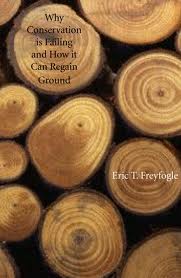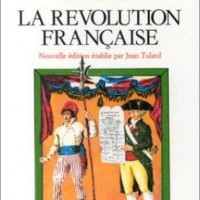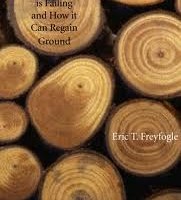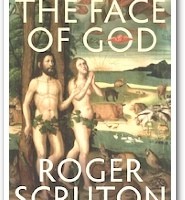Pierre Gaxotte, uno studioso contro il giacobinismo, di Marco Respinti.
Benemeritamente, la milanese Mondadori ha ristampato La rivoluzione francese. Dalla presa della Bastiglia all’avvento di Napoleone, di Pierre Gaxotte.
Nato il 19 novembre 1895 a Revigny-sur-Ornain, nel dipartimento della Meuse, nella Francia nordorientale, Pierre Gaxotte entra à l’École normale supérieure nel 1917. Nel 1920 vi consegue l’agrégation in Storia che, nel sistema scolastico francese, consente l’accesso alla docenza nel settore pubblico, mentre contemporaneamente ottiene una licenza in Scienze. Professore di liceo, stringe amicizia con Joseph Arthème Fayard (1866-1936), figlio del fondatore dell’omonima e prestigiosa casa editrice francese – Joseph-François Arthème Fayad (1836-1895) -, attraverso il quale viene presentato a Charles Maurras (1868-1952), il noto intellettuale della Destra monarchica e fondatore dell’Action française, di cui diventerà segretario.
Nel 1894, infatti, Fayard figlio, subentrato al padre nella direzione della maison, sposta gl’interessi della casa editrice dalla letteratura popolare ad autori decisamente conservatori come Maurice Barrès (1862-1923) e cattolici quali Paul Bourget (1852 -1935). Accanto a ciò, Fayard si lancia pure nell’affascinante mondo del feuilleton – un genere all’epoca popolarissimo, anzi pop -, monopolizzandone presto il mercato grazie al successo dei 32 romanzi della serie Fantômas, personaggio ideato nel 1911 da Marcel Allain (1885-1969) e da Pierre Souvestre (1874-1914), al centro pure di altri 11 romanzi composti poi dal solo Allain oramai “vedovo” di Souvestre. A Fayard si deve peraltro anche il lancio mondiale delle opere del prolifico scrittore belga Georges Simenon (1903-1989), padre del commissario Maigret.
Ebbene, alla ricerca costante di nuovi spazi editoriali e sempre al centro di coraggiose operazioni culturali, nel 1920 Fayard crea la collana “Grandes Études historiques” e ne affida la direzione a Gaxotte.
Fayard non è un editore neutro. Ha la netta percezione che la narrazione della storia – scritta sempre dai vincitori – e la produzione culturale – appannaggio di chi detiene il potere – necessiti, soprattutto del suo Paese, la Francia, emendamenti fondamentali rispetto ai cliché dominanti in cui trionfa la vulgata repubblicano-laicista e lo spirito massonico liberal-socialisteggiante. Per questo mette la propria casa editrice al servizio di una imponente opera revisionista che, coscientemente, concede ampi spazi all’ambiente umano, politico e culturale in quel contesto maggiormente dotato degli strumenti intellettuali adatti a rompere il monopolio del “pensiero unico”: la Destra, di cui proprio Gaxotte è un esponente noto.
DENTRO UN VESPAIO, CON CORAGGIO
Ora, la Destra in Francia è un vero dedalo. Ai tempi di Gaxotte e di Fayard è la sovrapposizione di anime diverse, persino di “correnti” contrastanti. In essa confluiscono, un po’ alla rinfusa, orientamenti e ispirazioni anche molto distanti tra loro, dai monarchici legittimisti ai cosiddetti orleanisti, dagli eredi del bonapartismo e quelli dello spirito vandeano, dai cattolici fedeli al Soglio di Pietro ai positivisti conservatori convinti che la religione – il cattolicesimo – svolga una essenziale funzione sociale di reazione e di supporto all’ideale monarchico teorizzando però che non è necessario crederci davvero (Maurras fu uno di loro, ma non così tutta l’Action française). Una Destra, insomma, in cui convivono, pur se a fatica, una “vera Destra” e una “Sinistra della destra”, quest’ultima essendo la somma – direbbe il più importante pensatore contro-rivoluzionario del secolo XX, il brasiliano Plinio Corrêa de Oliveira (1908-1995) – di molte “false destre”.
Il vizio di fondo degli ambienti più discutibili - e talora francamente impresentabili – di quella galassia è del resto il nazionalismo, sovente smaccato, che, nonostante una certa retorica ivi diffusa, è ideologia tra le ideologie. Per questo, infatti, alcuni di quegli ambienti finiranno per guardare con favore e dunque per affiancare i movimenti nazionalistici europei dell’epoca, sfociati poi in movimenti e in regimi fascisti (o fascistici). Del resto, nel brodo di cultura da cui nasce il “mussolinismo” – prima ancora del vero e proprio fascismo italiano – vi sono cospicui ingredienti francesi, dal sindacalismo rivoluzionario di Georges Sorel (1847-1922) al cosiddetto “boulangismo” (dal nome del generale Georges Boulanger, 1837-1891), vale a dire il movimento di opposizione che ,tra il 1886 e il 1889, accarezzò l’idea del golpe nazionalista.
Gaxotte però no. Aveva idee più chiare. Nuotò in quel mondo, militò tra i maurassiani, partecipò alle attività editoriali di Fayard che fiancheggiavano la “rivoluzione nazionale” auspicata dal leader dell’Action française, diresse i due settimanali politico-letterari lanciati dall’amico Arthème – Candide e Je suis partout, quest’ultimo divenuto, dopo la “gestione Gaxotte”, persino antisemita -, eppure non vi annegò mai. Gaxotte è stato infatti uno di quegli uomini di cultura e di scienza che non hanno mai disdegnato l’impegno politico, né nascosto le proprie idee controcorrente, ma che di certi ambienti hanno più che altro cercato di servirsi: per fare del bene e per indirizzare, anche a costo del fallimento.
Non scordiamo, del resto, che il privilegio offerto dal riflettere su determinati fatti a distanza di tempo è negato a chi i fatti li vive quando essi accadono. E che se questo certamente non assolve mai dalle responsabilità personali, altrettanto certamente non carica gli uomini liberi degli errori commessi da altri, anche magari molto prossimi. Gilbert Keith Chesterton (1874-1936) – per non citarne che uno – subì fortemente, all’inizio, il fascino del fascismo italiano; e suo cugino Arthur Kenneth Chesterton (1896-1973) fu invece smaccatamente fascista, antisemita e in collusione intellettuale con i nazisti. Per l’Action française di Maurras passarono comunque moltissimi intellettuali cattolici francesi certo non sospetti: il più noto di tutti fu il filosofo Jacques Maritain (1882-1973), che come molti altri poi se ne staccò, ma come scordare che in morte di Maurras tra i suoi laudatores figurò pure il Nobel T.S. Eliot (1888-1965)?
Read complete article in La Bussola Quotidiana
Des histoires sans Histoire, by Chantal Delsol.
La fiction que produit une époque est révélatrice. A-t-on remarqué les titres de notre production cinématographique ? Presque tous sont dans le style Mon père et moi, les Copains de ma femme, Mes amis de vacances, Deux frères… Autrement dit, des comptes rendus du quotidien, des histoires minuscules, des chroniques de la vie habituelle.
Hannah Arendt avait montré comment, à l’époque contemporaine, le charme avait remplacé la grandeur, et elle désignait le charme sous le nom de ce que les Français appellent, disait-elle, “les petits bonheurs”, petites choses de la vie qui en font le sel à défaut de significations plus hautes que nous avons perdues et qui d’ailleurs à présent nous dégoûtent. Vaclav Havel avait observé exactement la même tendance à l’époque du totalitarisme soviétique.
Que signifie une vie privée d’historicité ? Car il s’agit bien de cela. Ces histoires, souvent fort bien racontées, se passent en dehors des événements de la nation et du monde. Tout y est intemporel : on sait seulement que les faits se déroulent aujourd’hui. Les traces de la grande Histoire n’y apparaissent guère ou, si c’est le cas, elles n’en marquent pas la trame. L’avenir n’est pas présent non plus. Les personnages sont englués dans leurs soucis quotidiens, sentimentaux, professionnels, familiaux, amicaux, comme dans une nasse à la fois sans distance, sans remède et sans signification.
Il est très difficile de comprendre une histoire, même privée, sans l’inscrire dans un contexte plus vaste. Ou, pour le dire autrement, de comprendre une histoire privée sans l’inscrire dans le contexte de l’espace public.
Delphine Le Vigan a raconté dans un beau livre, Rien ne s’oppose à la nuit, l’histoire dramatique de sa famille, et parce qu’il n’est pas fait état du contexte, la tragédie semble liée à une sorte de destin grec… mais nous savons bien pourtant, d’expérience, que certaines familles entraînées dans le tourbillon de 1968, dans lesquelles par exemple le vol à l’étalage était un sport familial (pour ne pas citer d’autres habitudes plus graves), finissaient dans la multiplication des suicides, des dépressions et des séparations internes, toutes expressions d’un malheur objectif. Quand on ne veut pas prendre cela en compte, il faut aller chercher le destin grec, beaucoup plus romantique et déresponsabilisant, mais qui nous laisse évidemment devant notre vie comme des enfants impuissants.
Vaclav Havel dénonçait le mensonge de ces histoires sans Histoire, qui ne sont, disait-il, que des fictions – mais qui se font passer pour la vérité nue, exhibant tous les détails, à ce point que la calligraphie remplace le dessin, mais justement, la calligraphie par elle-même n’a pas de sens. Une vie réduite aux détails qui la constituent ressemble à un mot que l’on répète indéfiniment jusqu’à ce que sa signification se perde. La multiplication de ce type de fiction a été repérée dans les deux totalitarismes, le nazi et le communiste : il s’agissait toujours d’établir une vie sans historicité afin de la garder à merci et de lui donner forme comme à la cire molle. Le fait que nous retrouvions ce phénomène dans le monde occidental contemporain n’est pas un hasard, tant il est vrai que sur bien des points nous réalisons dans la douceur ce que les totalitarismes ont cherché vainement à réaliser par la terreur.
Nous avons grande envie de nous débarrasser de l’Histoire (que l’on est en train de supprimer dans certaines classes), synonyme pour nous de guerres, d’héroïsme violent et de fanatisme, et nous ne voulons pas être inscrits dans un contexte qui nous conditionne toujours d’une certaine manière.
Read complete article in Magistro
Toward a Conservative Conservation Movement, by Tobias J. Lanz
 Why Conservation Is Failing and How It Can Regain Ground, by Eric T. Freyfogle. Yale University Press
Why Conservation Is Failing and How It Can Regain Ground, by Eric T. Freyfogle. Yale University Press
Environmental conservation has moved from the margin to the political mainstream in recent decades. However, despite the high profile and widespread public support of environmental issues, conservation policy has failed to achieve many of its goals. Eric Freyfogle, environmental law and policy professor at the University of Illinois, argues that this is because it has been caught between two extremes—people who love wild animals and wild places and those who want to protect their own individual rights and liberties. This tension has created a fragmented environmental movement and a confused and frustrated public.
This impasse must be overcome if conservation is to be truly effective. In short, conservation requires a communal approach, one Freyfogle terms a “land community” approach that sees environmental problems as more than legal, economic or technical issues, but as cultural ones. History must also be used as a framework to understand how environmental problems evolved and and to comprehend their broader social and ecological impact.
The land community approach is one that Freyfogle derives from the conservationist Aldo Leopold and farmer/writer Wendell Berry. Leopold looked at the broader issue of land use, whereas Berry focuses more on the importance of farm and rural life. But both ground their ideas in human experience, in which people and their relationships to the land are the foundation for sound conservation. Such an approach eschews the radical individualism that has become the basis of American culture as well as the radical environmentalism that has grown in response to it.
Both types of radicalism undermine good conservation in the long run as they work against the common good. Radical individualism uses private property without any recourse to communal or ecological needs. Similarly radical environmentalism desires to create wilderness areas that are as free of human influence as possible. Neither tries to create a cooperative arrangement in which both the land and community can benefit in the long run.
Freyfogle is also critical of the popular concept of sustainability, which can be traced back to the early twentieth century ideas of “sustainable yield” championed by Teddy Roosevelt and Gifford Pinchot. Now, as then, its primary focus is fulfilling only human needs, thus marginalizing any ecological claims. Sustainability is also so vague it can easily be misapplied leading to even greater confusion. This is one reason that business and government use it frequently to justify a whole range of laws and policies—like sustainable growth—that can be detrimental to the environment. The conservation movement would be best served by jettisoning the term entirely.
Conservation cannot be based on abstract or universal concepts. So there is no universal conservation policy, rather myriad approaches, each tailored to the unique social and ecological conditions of a given environment. Good conservation must be based on sound principles, rooted in human experience. First, conservation must provide resources for future generations without compromising the integrity of those resources. Second, individual desires must always be balanced with those of the community. Third,conservation policy must recognize human ignorance, especially our limited scientific knowledge. Prudence and caution are in order. Last, and most importantly, conservation must be an ethical issue, even a religious obligation.
Read the complete article in The Imaginative Conservative
The face of God, by Roger Scruton.
In the religions that are familiar to us, the idea of grace is of fundamental importance. The term (Latin gratia) translates a variety of words in Hebrew, Greek, Arabic and Sanskrit, but all our sacred texts seem to point in the same direction, affirming that God’s relation to the world as a whole, and to each of us in particular, is one of giving. The beseeching of God’s grace is the central feature of the Anglican liturgy. The great prayer of the Catholic Church, based on a poem in the New Testament, greets the Virgin Mary with the words ‘Hail Mary, full of Grace, blessed art thou among women, and blessed is the fruit of thy womb, Jesus’. The Koran opens with the verse that forms a refrain in the life of all Muslims: bism illah il-raHman il-raHim, in the name of God, full of grace, full of graciousness, as Mohamed Asad translates it, and the root rHm is shared with Hebrew, used often in the Old Testament to denote God’s concern for us, his recognition of our weakness, and his abundance of gifts. The idea that the world is sustained by gift is second nature to religious people, who believe that they should be givers in their turn, if they are to receive the gift on which they depend for their salvation.
As I argued in Chapter Four, agape does not raise us to God, but comes down to us from God. It is received as a gift, and then distributed by each of us to our neighbours, as another gift. Hence C. S. Lewis, in The Four Loves, called it ‘gift-love’. It fills the world with the spirit of gift — but not a personal, exclusive or jealous gift, like erotic love. It is a gift that makes no demands; agape pursues the interest of the other and not that of the self. Mephistopheles describes himself to Faust as der Geist der stets verneint, the spirit that always negates. Just so is agape the opposite — the spirit that always affirms, by following the path of gift and sacrifice. Through agape we overcome the guilt of our own existence; we recognize that contingency brings suffering, and that suffering is a call to sacrifice. This spiritual transformation, whereby we come to accept both suffering and sacrifice, and find in them the moral order that makes sense of our lives, is rightly described as a ‘redemption’.
There is surely a great difference, which we all understand, between seeing something as just there (there for the taking) and seeing it as a gift. Only what is owned can be given, and gifts therefore come wrapped in the perspective of the giver, who has claimed them as ‘mine’, and also relinquished that claim for another’s sake. And the one who receives something as a gift receives it as a mark of the other’s concern for him; gratitude is not just normal — it is the recognition that the thing has really been given, and is not the first step in a bargain. Gifts involve conscious reflection on self and other, on rights and duties, on ownership and its transcendence. Hence they can only be offered I to I, and gifts are acts of acknowledgement between persons, in which each recognizes the freedom of the other. What looks like gift in other species is something else: for example, an instinctive withdrawal in favour of a kin-related member of the herd. And as I argued earlier, those evolutionary psychologists who describe the genetically motivated ‘altruism’ of animals in the language of human self-sacrifice overlook what is most distinctive of the human case, which is the decision to sacrifice oneself for the sake of another. I earlier remarked that it is as nonsensical to speak of the self as an object as it is to speak in the same way of a sake. Perhaps it is worth adding that only a self can understand a sake, and that to make sacrifices for others’ sake is to walk with God.
The religious frame of mind involves two ‘moments’ — as Hegel might put it. There is the moment of communion, and the moment of gift. The religious person is the one who experiences the deep need to give thanks; and he experiences this need as a communal impulse, something that he shares and which brings him together with a community, even if only a would-be community, a ‘communion of saints’ whose ‘Holy City’ has yet to be realized on earth. His need to give thanks is not circumstantial but metaphysical. It is rooted in the experience of being itself, in his way of understanding what it is to be. Being, for the religious person, is a gift, not a fact. It is through understanding this that we overcome our metaphysical loneliness, and understanding may require privation and suffering, through which we discard the dross of our own distractions. Hence the world, and the objects contained in it, come before the religious consciousness as the signs of another perspective — the perspective that has ‘given these things to me’. That perspective, which the Hindus call Brahman, is hidden from us in the way every other ‘I’ is hidden. But like those other ‘I’s it can appear in our world as a real presence. The gathering together of the community in the moment of thanks prepares the way for this.
The most important occasions for communal thanks are the ceremonies in which social membership is renewed. For the participants the rite of passage is an enhanced experience of being, in which the aspect of gift is emphasized and solemnized. Birth is a gift of new life; the rite of initiation is a gift of the world and its knowledge to the youth and of the youth to the tribe; marriage is a gift of two people to each other, in which others participate with gifts; the funeral is a service of thanks for a life, and a ritual mourning for someone whose life is thereby replayed in retrospect as a giving, its previous character as a ‘taking’ entirely expunged.
Gift lies at the heart of sacrificial religion too. The offering at the altar is a gift to the god, who himself returns it as a gift to his worshippers. There is a mysterious feeling of unity that is experienced by the worshippers at this moment — the moment of the sacrament, when what is given is also received, but received in another form. All sacred moments are moments of gift — of gift revealed as the way things are. The distinctiveness of the Christian Eucharist is that it makes this wholly specific. The Eucharist commemorates God’s supreme gift, which is the gift of himself — his own descent into the world of suffering and guilt, in order to show through his example that there is a way out of conflict and resentment — a way to restore through grace the givenness of the world.
For me the Christian view of the matter is the one that gives the greatest insight into our situation. The Christian God is agape, and even in a world that has launched itself on the path of desecration, he can show himself in the sacrificial acts of individual people, when they set aside the call of self-interest and act for others’ sake. Acts of self-sacrifice appear in the world of objects and causes as revelations: the I that gives itself opens a window in the scheme of things through which we glimpse the light beyond — the I AM that spoke to Moses.
God revealed himself on that occasion as we do — by coming to the threshold of himself. He came before Moses as a point of view, a first person perspective, the transcendental ‘I am’ that cannot be known as an object but only as a subject. This perspective can become a real presence among us only if it can be revealed in the world of objects, as the human subject is revealed in the human face. But how can this be?
Christianity has an answer to that question and that answer is the incarnation. God, in the person of Christ, is present among us. It is from the life of Christ that we can understand the true nature of God’s goodness. Christians believe that, in undergoing crucifixion, Christ took the sufferings of the world on himself — in other words, he lifted suffering out of the negativity in which we tend to view it, and showed it as an attribute of God, something which is not, therefore, alien to the world of creation but an integral part of it. Through suffering Christ showed us that our own suffering is worthwhile, and the occasion through which to grow morally by imitating him. By making himself available for suffering, so to speak, God could make a gift of himself in Christ, a sacrifice which points us towards salvation, by showing that sacrifice is what life on earth is all about.
The power of this idea is evident. It makes the real presence of God easy to understand, because it becomes merely a special case of the real presence of the human subject (an experience that independently dominates the lives of human beings). But it leaves us with a residual concept — that of the Incarnation — every bit as puzzling and mysterious as the one that it set out to explain: a concept that once again lies inexplicably suspended between causation and revelation. So is this as far as we can get? Perhaps it is, from the metaphysical point of view. But from the moral point of view there are a few thoughts to be added, which are thoughts that are as relevant for an atheist as they are for a believer. Indeed it was a non-believer who gave them their deepest expression.
Keep reading the text in Catholic Education Resource Center



